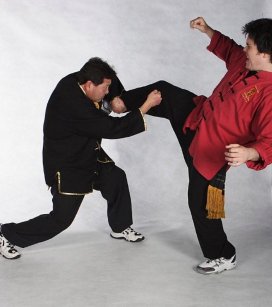 Dim mak techniques are to be used strictly for self defence purposes or for self healing. They are not to be used to harm another person.
Dim mak techniques are to be used strictly for self defence purposes or for self healing. They are not to be used to harm another person.
The techniques used in dim mak are not about “flashy” movements, only efficient ones. It isn’t about slugging it out for ten minutes or more, it’s about doing what needs to be done fast, and being able to walk away.
It isn’t about rushing in either, thoughtless and off-balance, it’s about focus and balance, as taught in the Ghost Hands of Dim Mak programme.
To this end, there are some key techniques and principles you must know when using pressure points in a self-defence situation, these are as important as the technicalities and understanding of the art itself, because it is these principles that will help ensure you stay safe.
- ‘Flashy’ is dangerous – never put yourself in danger in order to strike a target. In self-defence, flashy will get you injured.
- No trade-offs – don’t assume that taking a blow yourself to hit the target is worth the price, this is rarely the case. Only in a life and death situation may this be a consideration, where the alternative is your death, or take a blow. But trade-offs are risky, even for skilled practitioners.
- Stay balanced – if using a technique means that you upset your balance in some way, it will weaken your technique, lessen the effectiveness of your strike and leave you in a vulnerable position. Look for other alternatives that allow you to stay balanced and poised. Remember being unbalanced physically also upsets your mental focus, and this is not the time to lose concentration!
- No rushing – rushing is like flashy – it puts you in danger. Take your time to hit the target, focus and balance and then deliver the strike.
- Easy is best – choose the easiest pressure point that will produce the maximum effect with one strike. Look at the targets you have available, those that are easy to reach and those that are open; choose the one that will give the maximum effect to allow you to get away. Remember, you are defending yourself, someone is trying to harm you, and this is not a demonstration.
- Three strikes should be it! – But one strike is best. If in three strikes you haven’t achieved the result you wanted, then it’s time to reassess. Maybe there’s an easier target, maybe your timing is out, either way, the important thing is that you aren’t safe yet! So reassess.
Pressure point fighting is about self-defence and safety for the practitioner. These principles of application are an integral part of this philosophy so you can further your study of pressure points.
More articles on dim mak pressure points techniques can be found in the blog.
